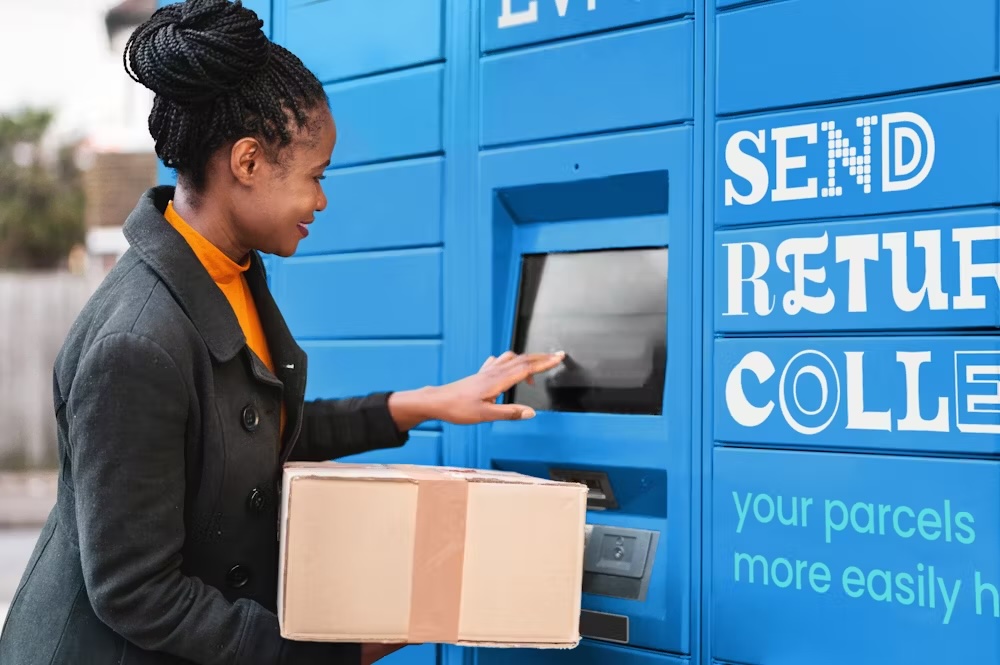InternetRetailing rounds up the latest news, insights and trends on how retailers and customers are responding to peak trading this year. In recent years pre-Christmas shopping has been at its highest over the Cyber Weekend of Black Friday to Cyber Monday, but the shape of this year’s shopping could well be different since there was, until last week, a lockdown of non-essential shops in England. Non-essential shops are currently open in Wales but closed until December 11 in Northern Ireland, and in 11 Tier 4 areas in Scotland, including Glasgow.
CONSUMER SPENDING DROPPED IN NOVEMBER’S LOCKDOWN, BUT PEAK IS SEEING IT PICK UP
Despite another challenging month, there were some bright spots in November as consumers shopped online to make the most of seasonal sales, while Covid-19 vaccine news also contributed to Brits feeling more upbeat as the Countdown to Christmas began.
Data from Barclaycard, which sees nearly half of the nation’s credit and debit card transactions, reveals that spending on essential items grew 4.9 per cent year-on-year, as ‘circuit breaker’ restrictions meant many Brits stayed at home and shifted their spending to essential stores and online.
Supermarkets saw a 17.9 per cent year-on-year rise in expenditure, up from 13.9 per cent in October, helping to offset a 23.8 per cent decline in fuel. Online grocery shopping also saw a steep 97.4 per cent rise as Brits went online to start stocking up on Christmas supplies.
Spending on non-essential items contracted 4.6 per cent, with department stores and clothing seeing declines of 18.0 per cent and 13.0 per cent respectively – the largest drops in both categories since June, when the first lockdown measures were still in place.
While physical stores experienced another challenging month, ecommerce sale rose, with general retailers and clothing enjoying online rises of 73.8 per cent and 35.6 per cent respectively.
Looking ahead to 2021, a third of Brits (33 per cent) say they are feeling more upbeat about their finances and job security due to news about the Covid-19 vaccines. Confidence in household finances remained steady at 69 per cent, up slightly from last month (67 per cent), and one in five (20 per cent) plan to purchase big-ticket items in the near future, as they are optimistic that life will start returning to normal soon.
For some, Christmas is an opportunity to raise spirits and spoil their nearest and dearest: one in four (26 per cent) admit to putting their Christmas tree up earlier than usual and a fifth (21 per cent) say they will spend more than normal on gifts for loved ones. However, not all consumers are feeling optimistic, with confidence in the UK economy remaining low at 23 per cent, versus the 31 per cent seen in November 2019.
Raheel Ahmed, Head of Consumer Products, says: “Despite the restrictions in November, Brits are feeling more positive about their household finances as they start to prepare for the festive season. Christmas trees are going up just that bit earlier, and many are planning to spend more treating their loved ones after such a testing year.”
Ahmed adds: “Supermarkets, local shops, and online retailers have all performed strongly, while the longer evenings at home saw spend soar on digital subscriptions and electronics, helped by new consoles hitting the market.
Ahmed concludes: “Unfortunately, the hospitality and entertainment sectors have continued to suffer. The big question now is whether Brits will flock to the high street for Christmas shopping after the November lockdown, providing a much-needed boost in December.”
RETAILERS UNPREPARED FOR THE DISRUPTION CAUSED BY CONSUMER SHOPPING BEHAVIOUR CHANGES
Seismic shifts in consumer shopping behaviour are happening in the run up to the festive period, according to new research from BlueVenn.
Some 45% of British consumers say they will dramatically change the way they shop this year, decimating the predictions and forecasts that marketers and businesses rely on during the holiday season.
And it appears that younger generations are the most likely to upend expectations and readily embrace change, with 59% of 16-34 year olds expecting to significantly change their shopping behaviour, according to new research from BlueVenn.
For marketers, there are considerable fears about their ability to react and respond. The majority of marketers (58%) are concerned that they won’t be able to alter their marketing efforts to cope with changes in consumer behaviour, jumping to an eye-watering 80% for brands with revenues between £100 and £499 million. Retailers are most worried that they will fail to ensure personalisation over multiple channels (53%) and miss out on target customers (51%), but a fear that they will waste advertising budget comes in close third (42%).
Despite lockdowns and health concerns around Covid-19, half of all shoppers will carry out their shopping through a mixture of online and in-store trips. Even amongst the group of hybrid shoppers, there has been a distinct shift in the proportion buying online this year. ‘Hybrid shoppers’ in the UK last year conducted the majority of their shopping in-store (averaging 88% in-store compared to 12% online), however this year the balance has shifted, placing a greater focus on online purchasing (averaging 55% online compared to 45% in-store).
Steve Klin, CEO of BlueVenn, says: “For multichannel retailers, with both an online and high street presence, our findings are both a blessing and a curse. Our research shows there is understandably a trend towards online shopping, but also suggests that retailers need to be prepared to accommodate the rise of the ‘hybrid shopper’ – those customers that increasingly mix both online and in-store trips as part of their festive spending spree. With just under half (41%) of those surveyed admitting this seasonal behaviour will be indicative of their future shopping habits, gaining a full understanding of that behaviour will be critical. Whilst retailers are rightly embracing digital channels, they will need to be able to track their customers’ meandering passage between their online and offline channels.”
INCREASE IN ONLINE SHOPPING ACCELERATING RACE FOR CUSTOMER LOYALTY
pandemic-induced boom in online sales has left FMCG brands vulnerable – with consumers more likely to buy own-brand products, and less likely to make spontaneous purchasing decisions when grocery shopping online.
So finds a study of 1000 UK grocery shoppers by the Digital Business Collective (DBC), an initiative involving BORN, and dotdigital to help FMCG brands drive direct customer engagement by accelerating digital channels and initiatives.
The study found that when grocery shopping in a physical store, four out of five (80%) UK consumers agree they are likely to make a spontaneous in-store purchase from a brand they recognise and trust. This falls to just three in five (60%) when grocery shopping online. This decrease could be due to the fact that just 16% of consumers cite brand as an important factor in influencing which product they buy when shopping online.
This change in consumer behaviour could present a challenge for many FMCG brands as they try and attract and retain consumer loyalty online. The Office for National Statistics’ revealed that online shopping in the UK has risen by 46% since February. This is a trend that is set to continue as the DBC research uncovered that 23% of consumers will only partially go back to physical stores post-pandemic, while 17% plan to maintain the shopping habits they adopted during lockdown, and a further 17% plan to increase their use of online shopping.
Nicole Wilson, Consultant at the Digital Business Collective explains: “COVID-19 and the ensuing lockdown drastically changed UK consumers’ shopping behaviours, as thousands of people who habitually did in-store shopping for necessities like groceries, began to do it online. We wanted to understand the way in which this shift to online shopping changed the way these consumers interacted with FMCG brands.”








